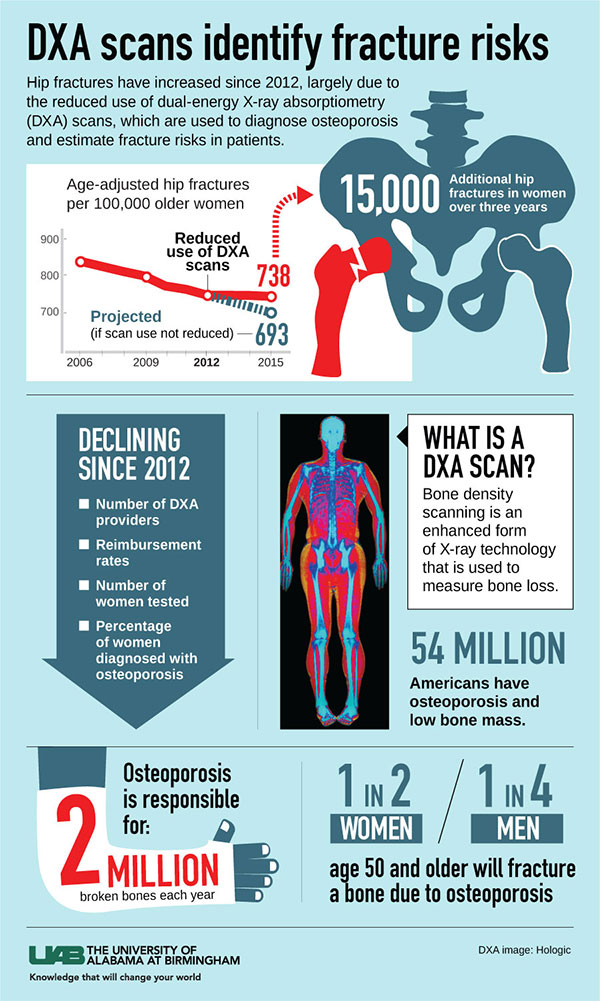 Hip fractures increased in the United States since 2012 following a reduction in the reimbursement rates for dual-energy X-ray absorptiometry scans, which led to fewer DXA scans being administered to diagnose osteoporosis and estimate fracture risks in patients.
Hip fractures increased in the United States since 2012 following a reduction in the reimbursement rates for dual-energy X-ray absorptiometry scans, which led to fewer DXA scans being administered to diagnose osteoporosis and estimate fracture risks in patients.
Osteoporosis, a skeletal disorder characterized by bone thinning and deterioration with subsequent fractures, is a medical and socioeconomic threat to the United States’ aging population.
Sarah Morgan, M.D., CCD, medical director for the University of Alabama at Birmingham Osteoporosis Prevention and Treatment Clinic and UAB DXA Facility, was one of two physicians in a group of patient advocates and individuals from the International Society for Clinical Densitometry, the National Osteoporosis Foundation, the American Society of Bone and Mineral Research, and the American Association of Clinical Endocrinologists who visited Washington, D.C., in September to lobby the U.S. Centers for Medicare and Medicaid Services for better DXA payment on the grounds that a proposed payment reduction could impair access to this valuable preventive service.
“A DXA scan is a better predictor of a fracture than a cholesterol level is of a future heart attack or stroke,” said Morgan, a certified clinical densitometrist at UAB. “In the past few years, Medicare has been lowering reimbursement for DXA scans to a point that has been below the cost to perform the test. In turn, there are fewer DXA machines, patients are receiving fewer DXA scans, and we are seeing a significant increase in hip fractures.”
In November, Medicaid announced that, instead of the proposed cut from $100.69 to $63.33 for DXA reimbursement, the new reimbursement rate for 2017 will be $112.69 for DXA scanners in hospital facilities.
“This is an important victory for bone health,” said Morgan, who represented the International Society for Clinical Densitometry as a past president. “There are fewer operational DXA scanners in hospitals and clinics. Among the scanners that remain, people have not always wanted to update them due to the poor reimbursement.”
UAB is one of 44 hospitals nationally with an International Society of Clinical Densitometry-accredited DXA facility, which assures that quality DXA scans are performed. The UAB Osteoporosis Prevention and Treatment Clinic is a multidisciplinary clinic that has nurses, dietitians, physical therapists and physicians working together to improve skeletal health. A patient education class is held each Wednesday from 11 a.m.-1 p.m. at The Kirklin Clinic. DXA scans are also available at UAB Medicine Leeds.
Recently, Morgan and fellow researchers published guidelines for quality DXA scanning in the Journal of Clinical Densitometry outlining best practices related to DXA scan acquisition, analysis and interpretation and reporting of DXA scans.
“The UAB DXA facility fully follows all of these recommendations for quality DXA scanning,” Morgan said.
More information about the UAB Osteoporosis Prevention and Treatment Clinic can be obtained at www.uabmedicine.org/patient-care/conditions/osteoporosis. The clinic website contains more information about DXA scanning at www.uab.edu/shp/toneyourbones.